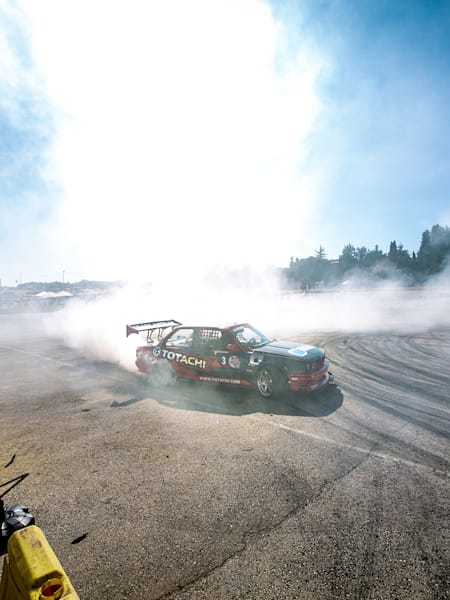Drifting has evolved rapidly ever since its introduction and gradually gained traction, going from a niche driving technique to a widely recognized motorsport with global appeal. Keep reading to learn about its evolution around the world.
The Beginning
Drifting originated in Japan in the 1980s, primarily as a technique used by street racers. The technique involved deliberately oversteering to make the rear wheels lose traction, allowing the driver to control the car through a corner with the rear end sliding.
The sport was popularized by Japanese drivers like Keiichi Tsuchiya—often referred to as the "Drift King”—who showcased the technique in races and films, helping to bring it into the spotlight.
Drifting Goes Mainstream
In the 1990s, drifting gained mainstream recognition through video games like "Initial D" and car culture films such as "The Fast and the Furious" franchise. These media portrayals helped introduce drifting to a global audience.
The first official drifting competitions were held in Japan, including events organized by the D1 Grand Prix series, which played a crucial role in formalizing and popularizing the sport.
International Spread
In the 2000s, drifting quickly spread to other countries, with competitive series emerging in North America (Formula Drift), Europe, and elsewhere. These international events helped to standardize the rules and practices of the sport.
The sport became integrated into car culture worldwide, influencing vehicle modifications, tuning, and styling. Its appeal grew among automotive enthusiasts due to its emphasis on skill and style.
Modern Era and Professionalization
Professional drifting leagues like Formula Drift and the Drift Masters European Championship continued to grow in prominence in the 2010s, bringing increased visibility and sponsorship to the sport. In the meantime, advances in technology, such as improved suspension systems, tires, and engine tuning, enhanced the performance and safety of drifting. The sport saw innovations that allowed for more precise control and higher levels of competition.
Current Trends and Future Outlook
Drifting has become a global phenomenon, with events and enthusiasts spanning continents, with countries like the United States, United Kingdom, Australia, and various Asian nations brimming with vibrant drifting communities.
Social media and online platforms have also played a significant role in drifting’s popularity, with content creators and influencers showcasing drifting events, techniques, and car builds to a global audience. There is also a growing focus on making drifting more inclusive and diverse, with efforts to encourage participation from different demographics and backgrounds.
Moreover, the integration of new technologies, including electric vehicles and advanced driver-assistance systems, may influence the future of drifting. Some events are experimenting with electric drift cars, reflecting a shift towards more sustainable practices.
Overall, drifting has evolved from a street racing technique to a globally recognized motorsport with a strong following and professional structure. Its growth has been driven by a meticulous combination of cultural impact, media exposure, and technological advancements, and it shows no signs of slowing down anytime soon.






